Who Tells Us What Amount of EMF Exposure Is Safe and Can We Trust Them?
Written by World Council for Health steering committee member and Health & Science Lead Christof Plothe DO.
Our bodies are not just mere flesh and bones but intricate networks of bioelectrical energy that dance and intertwine with the very fabric of nature itself. Natural electromagnetic frequencies pulse and vibrate all around us. Like invisible threads connecting us to the world, these frequencies shape our every move and influence the mechanisms of life, including our own existence.
Think of it like a grand, bioelectrical symphony, of which we are part. Except that now, a new, jarring collection of frequencies has been added, drowning out the harmony of nature’s music, with devastating effects. In the last decades, we have introduced man-made pulsed electromagnetic fields and frequencies (EMFS) that are millions of times stronger than the forces that control nature.
The damage these EMFs inflict is so profound and pervasive that it is overwhelming. Every species on this planet, from the tiniest insects to the mightiest elephants, suffers under the weight of these powerful electromagnetic waves. Evidence of their destructive power emerged in the 1960s, and at the time, scientific advisors recommended against introducing EMFs. Since then, the evidence has continued to mount.
What do manmade EMFs do to humans and animals?
We now know that EMFs can causeneurobehavioral disorders, sleep disturbances, fatigue, and symptoms like headaches, anxiety, and depression. Studies show harmful impacts on almost all organ systems of our bodies, including cells in our microbiome. EMFs can have severe effects on our fertility, and if that wasn't enough, they have even been linked to cancer.
The world's most extensive study (costing US$25 million), the National Toxicology Program shows a statistically significant increase in the incidence of brain and heart cancer in animals exposed to EMF below the ICNIRP guidelines followed by most countries (more about ICNIRP in a moment). The brain, in all its delicate complexity, is especially vulnerable to the radiation unleashed by these electromagnetic influences.
A large number of peer-reviewed scientific reports now demonstrate harm to human health from EMFs (ERS, 2024). Also:
Some 93 out of 100 studies prove oxidative stress caused by radiofrequency exposure leading to chronic inflammation.
In an article, ‘Planetary electromagnetic pollution: it is time to assess its impact’, published in The Lancet (December 2018), scientists from the Australian research group ORSAA state that out of 2266 studies on EMFs, no less than 68 percent found “significant biological effects or health effects.”
In 2012, 29 independent scientists and health experts worldwide warned in an update of their Bio Initiative 2007 Report about “possible risks from wireless technologies and electromagnetic fields.”
In 2017, more than 200 doctors and scientists from various countries launched the so-called 5G Appeal, which has since received more endorsements and whose mission statement starts with demanding a moratorium on the roll-out of fifth generation, 5G, for telecommunication until potential hazards for human health and the environment have been thoroughly investigated by scientists independent from industry.
How much EMF is too much? It depends who you ask…
What is a safe level of EMF exposure? Most health regulatory bodies and governments look to the International Commission on Non-Ionizing Radiation Protection (ICNIRP) for guidance here. Even so, there is a wide variation in what individual countries consider an acceptable level of EMF exposure (see graphic below).
Please note what independent researchers recommend based on the data we have accumulated. Buildings biologists, for example, recommend remaining below 10 μW/m2 and consider it of huge concern if levels reach 1,000 μW/m2. The Bio Initiative Report Recommendation for ‘No Observable Effects’ is 3-6 μW/m2. Before we look at ICNIRP’s guidelines, bear the following in mind:
Above 24,000 μW/m2, the blood brain barrier opens.
Above 2,000 μW/m2, there is a twofold increase in leukemia in children
After exposure to the equivalent of a phone call, there is a sixfold increase in chromosome breaks. This indicates that the genotoxic effects of the electromagnetic radiation is elicited via a non-thermal pathway, increasing the chances of cancer which is already observable in children above 200 μW/m2.
Distance decreases the intensity: a tablet 20cm away exposes the body to around 200,000 μW/m2. At 50cm distance this exposure drops to 32,000 μW/m2, and after 1m this drops again to 8,000 μW/m2. So distance to the EMF sources does matter.
So, what does ICNIRP advise as a safe level exposure? An astonishing figure of up to 4,500,000 μW/m2. Clearly, authorities should start to demand an independent reevaluation. Especially since the Cosmic Background-Evolutionary Radiation is below 0.0000001 μW/m2, we might ask who makes the recommendations, and compare the rationale between the different opinions.
The below images were taken by Dr Tess Lawrie, who explains, “On the left was the reading I received turning my phone on Sunday morning - off the charts. When the red light on the Safe & Sounds Meter flashes slowly it means 10 x the recorded reading. When it flashes fast it means 100x the recorded reading.”
Do you use an EMF meter? Tell us in the comments below what kind you use and if it can read higher EMF levels.
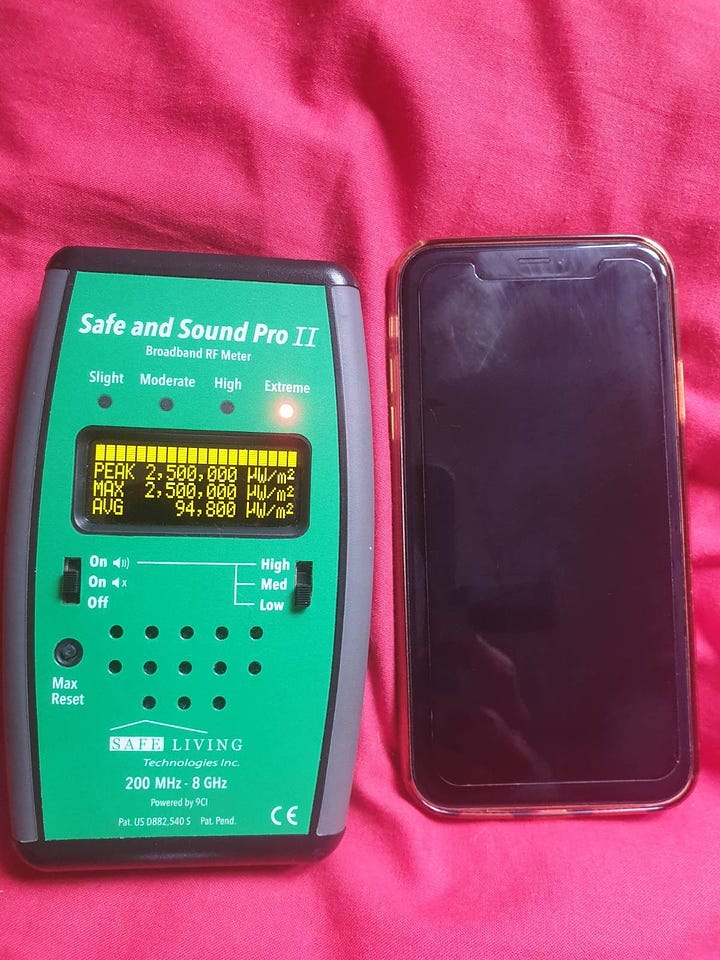
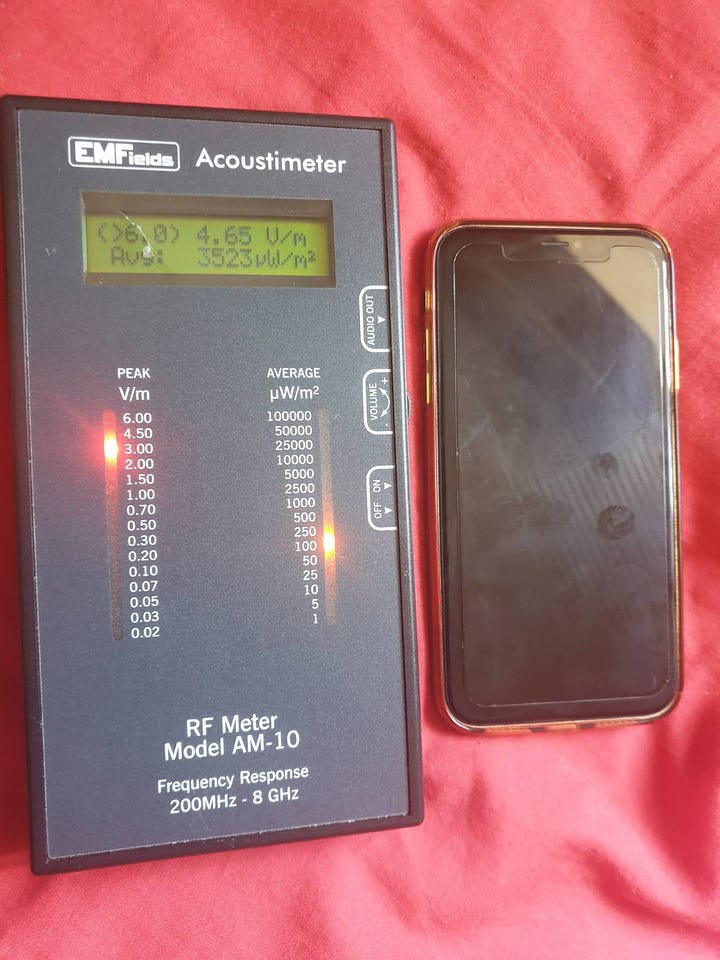
The ICNIRP: A private organization with close ties to the WHO and UN
Founded in 1992 in Germany, the ICNIRP is a private, non-governmental organization (NGO) closely connected to the EMF project of the World Health Organization and the United Nations (UN). While it is not an official organization of the WHO or UN, the ICNIRP's recommendations are declared as the basis for the safety limit regulation.
Several questions arise regarding the ICNIRP's role and legitimacy:
The ICNIRP is not a UN or WHO organization but a self-appointed group of older individuals. It does not have a mandate from the UN, the WHO, or any democratically elected government or national authority.
The ICNIRP appoints and removes its members, raising concerns about its independence and accountability. In fact, in recent law cases, the ICNIRP authority has yet to be recognized, and its independence cannot be demonstrated. The ICNIRP's financial dependence on electricity companies, mobile network operators, and the relevant industry is a point of constant inquiry.
The legal form of the ICNIRP remains to be determined. If the ICNIRP lacks statutes, it may not legally exist. If it does not legally exist as a corporate entity, it raises questions about the justification for using its recommendations as the basis for legal regulations.
In 2020, Professor Klaus Buchner MEP and the former EU MP Michèle Rivasi published a critical report on the ICNIRP questions. Titled ‘The International Commission on Non-Ionizing Radiation Protection: Conflicts of Interest, Corporate Capture and the Push for 5G’, it deals specifically with how the scientific debate has been hijacked by corporate interests from the telecom industry and conflicts of interest. The authors state that the findings of this report give an uncomfortable déjà-vu: many facts and processes that lead to the current situation whereby European authorities – from the European Commission to most of the member states – close their eyes to scientific facts and early warnings. “We have seen the same scenario in the debate on tobacco, asbestos, climate change and pesticides”, they state.
The ICNIRP's controversial stance on non-thermal effects
The ICNIRP has consistently rejected existing knowledge and research findings related to the non-thermal effects of electromagnetic radiation. Representatives from the ICNIRP, including those from the industry, vigorously defend the purely thermal view of radiation and deny the existence of biological non-thermal effects. This stance has led to the excluding of any mention of non-thermal effects within the ICNIRP and the dismissal of thousands of studies that provide evidence of such effects. This irresponsible attitude has resulted in numerous health consequences worldwide. In May 2011, the International Agency for Research on Cancer (IARC), the cancer research agency of the WHO, concluded that high-frequency radiation in the frequency range of 30-300 GHz is “possibly” carcinogenic to humans (Group 2B). The ICNIRP ignores this vital conclusion. Meanwhile, countless studies have confirmed this effect.
The need for investigation and independent scientific input
Given the concerns surrounding the ICNIRP, a thorough investigation of its role and operations is crucial. A group of independent and responsible scientists should be given the foundational work for safe threshold value recommendations. This would ensure unbiased and scientifically sound guidelines for non-ionizing radiation protection.
In conclusion, the ICNIRP's status, influence, and association with the WHO and UN raise essential questions about its legitimacy and the basis for using its recommendations in legal regulations. The dismissal of non-thermal effects and the lack of transparency further contribute to the need for an urgent comprehensive investigation and the involvement of independent scientific experts in the field.
In the meantime, we should be vigilant, aware, and strive to protect ourselves and our fellow creatures from the overwhelming power of these artificial electromagnetic forces. Please get a good EMF meter so you can decide yourself what levels you and your children want to be exposed to at their school, your workspace and your home. Please also consider how you can protect and shield yourself from these frequencies.
Here are just a few ideas:
Use your mobile, your tablet and laptop with cable bound options at home (Ethernet/LAN adapters).
Turn off WiFi and all other wireless devices (Printer, etc.) at home.
Turn off WiFi, Bluetooth, GPS, Internet functions of your mobile, which should not be carried on the body and only enable these functions when using them. So you still can receive a call when necessary.
Consider using protective clothing and other accessories that help to shield the body from EMF exposure. Some good options are available in the World Council for Health online shop.
Consider purchasing an EMF meter. The Trifield TF2 EMF Meter is available in the World Council for Health online shop.
If you find value in this Substack and have the means, please consider making a contribution to support the World Council for Health. Thank you.
Sources:
NTP, 2016; https://ehtrust.org/cell-phone-radiofrequency-radiation-study/
ERS, 2024; https://www.saferemr.com
Yakymenko I, Tsybulin O, Sidorik E, Henshel D, Kyrylenko O, Kyrylenko S. ‘Oxidative mechanisms of biological activity of low-intensity radiofrequency radiation.’ Electromagn Biol Med. 2016;35(2):186-202. doi: 10.3109/15368378.2015.1043557. Epub 2015 Jul 7. PMID: 26151230.
Bandara, 2018; https://www.thelancet.com/journals/lanplh/article/PIIS2542-5196(18)30221-3/fulltext
Bionitiative, 2007; https://bioinitiative.org
5G Appeal, 2017: https://environmentandcancer.com/5g-appeal/
Nittby, 2009; Increased blood–brain barrier permeability in mammalian brain 7 days after exposure to the radiation from a GSM-900 mobile phone, https://www.sciencedirect.com/science/article/abs/pii/S0928468009000133?via%3Dihub
Mashevich M, Folkman D, Kesar A, Barbul A, Korenstein R, Jerby E, Avivi L. Exposure of human peripheral blood lymphocytes to electromagnetic fields associated with cellular phones leads to chromosomal instability. Bioelectromagnetics. 2003 Feb;24(2):82-90. doi: 10.1002/bem.10086. PMID: 12524674.
Rivasi, 2020; https://www.michele-rivasi.eu/wp-content/uploads/2020/06/ICNIRP-report-FINAL-JUNE-2020_EN.pdf
IARC, 2011, Press Release No. 208, ‘IARC Classifies Radiofrequency Electromagnetic Fields As Possibly Carcinogenic To Humans’, https://www.iarc.who.int/wp-content/uploads/2018/07/pr208_E.pdf

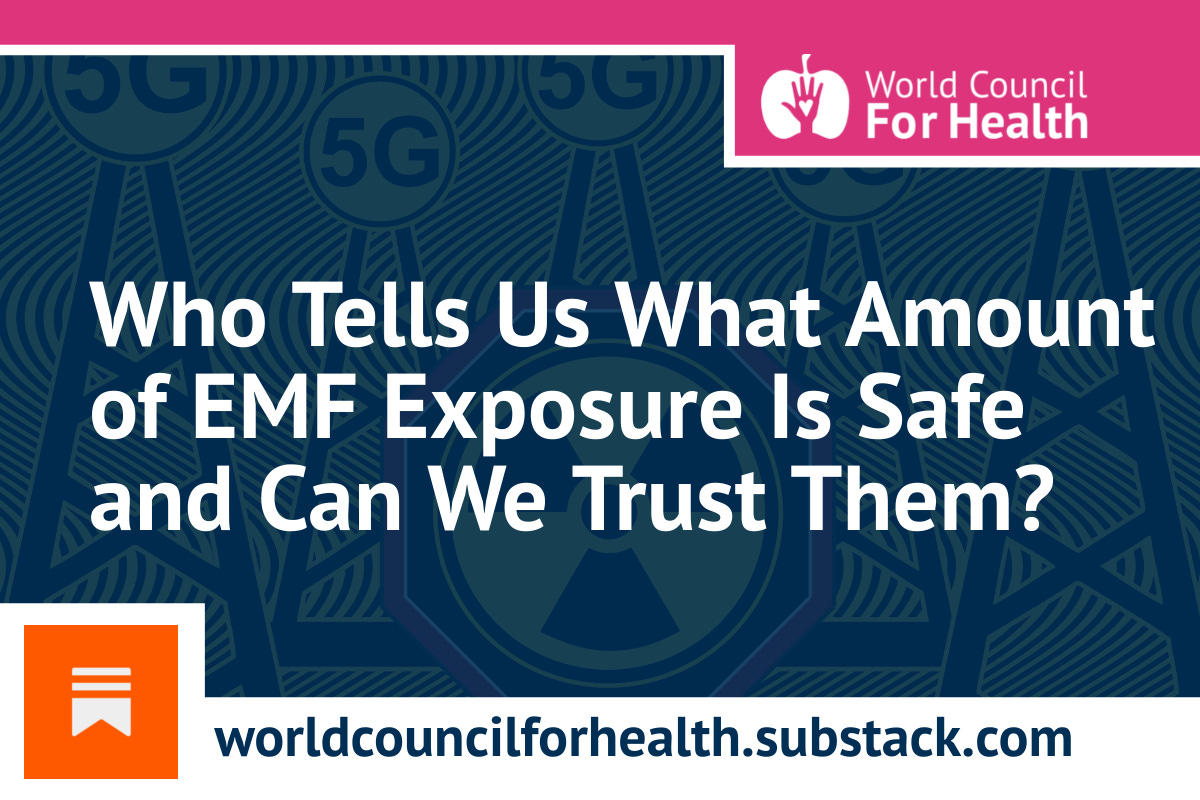
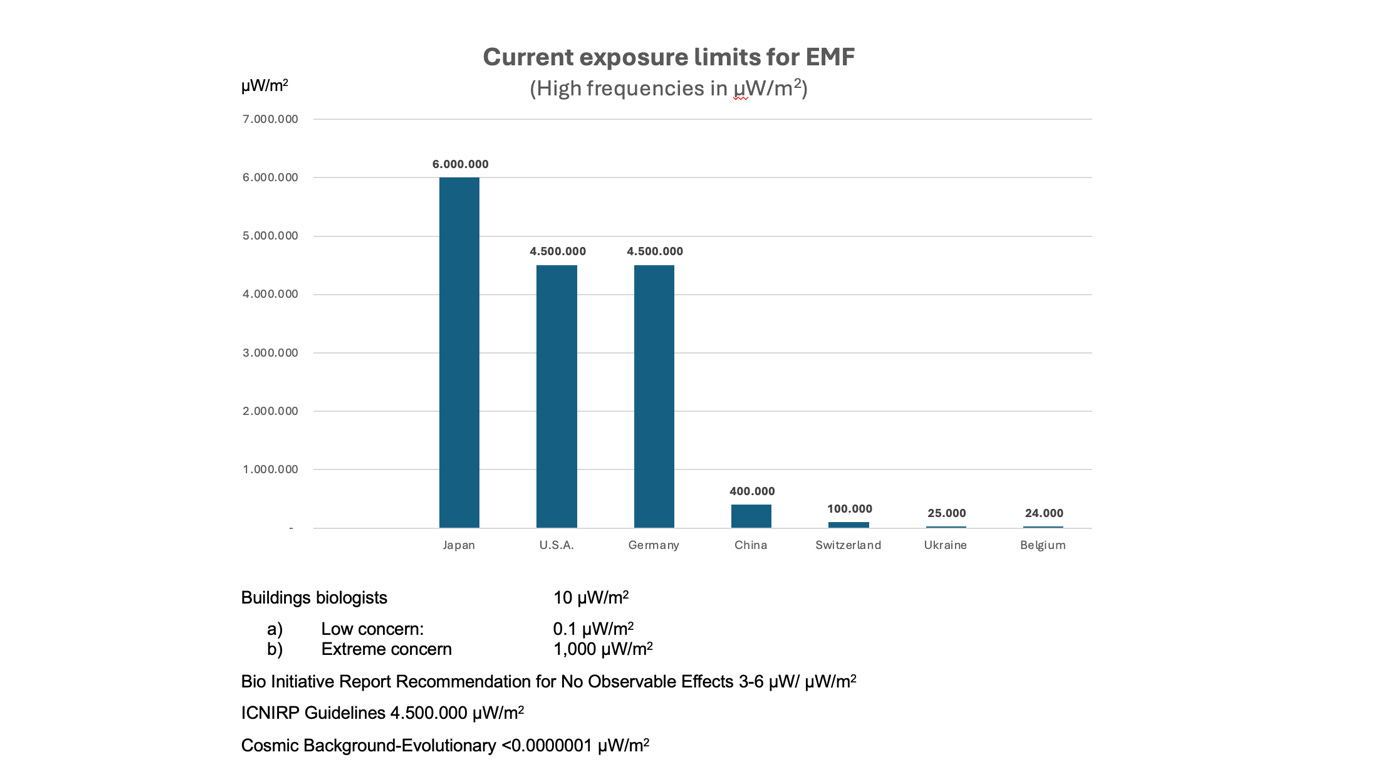

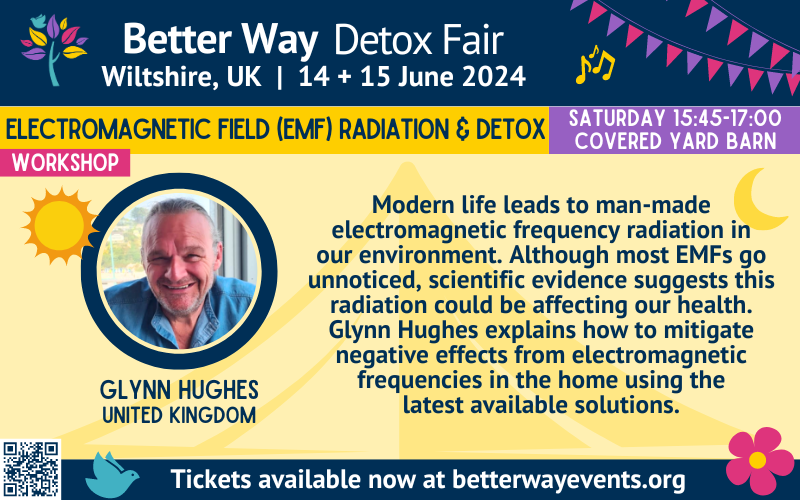

No comments:
Post a Comment